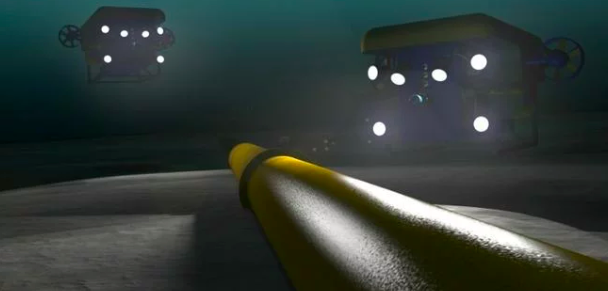Li-Fi: The Future of the Internet
- Transfer
Imagine a time when each of the light bulbs in your home will be the source of the Internet. Imagine a scenario where, after standing under a light bulb for only one minute, you would download about 5 HD movies. Sounds cool right? But thanks to Li-Fi technology, this dream can become a reality. With this technology, we can rethink the role of light as such.

What is Li-Fi?
Li-Fi is a visible light communication system ( VLC ) that uses light to send wireless data embedded in its beam. A Li-Fi enabled device converts a light beam into an electrical signal. The signal is then converted back to data. This term was coined by the German physicist Harald Haas during the 2011 TED Talk. He foresaw the idea of using light bulbs as wireless routers.

Li-Fi lamps are equipped with a chip that slightly modulates the light for optical data transmission. Data is transmitted by household LED ( LED ) lamps and received by photoreceptors. With the detailed implementation of the system, Li-Fi can reach transmission speeds that are approximately 100 times higher than the modern traditional Wi-Fi operating on radio waves (i.e., the speed can reach more than 1 gigabit per second).

Li-Fi system architecture
Li-Fi is a fast and cheap optical version of Wi-Fi, using visible light from the electromagnetic spectrum from 400 to 800 THz as the optical carrier for data transmission.
The main components of the basic Li-Fi system include:
- White LED high brightness, which serves as a transmission source.
- Silicon photodiode with good response to visible light as a receiving element.

How it works?
LED bulbs can be dimmed at very high speeds, indistinguishable to the human eye. Short pulses with fast dimming of LED lamps are then converted by the “receiver” into an electrical signal. After that, the signal is converted back into a stream of binary data, which we receive in the form of web, video and audio files on our devices with Internet access.
Pros and cons compared to Wi-Fi
Pros:
The most distinctive feature of Li-Fi is that, unlike Wi-Fi, it does not interfere with radio signals, which puts it in more advantageous positions in terms of stability of Internet speed. This is without taking into account the huge difference in the speeds of the two types of compared networks.

Li-Fi is more secure and provides additional privacy as the light is blocked by the walls and therefore provides more secure data transfer. In the case of using Wi-Fi, the network is subject to hacking because it has a wider coverage, and the radio frequency signal cannot be blocked by walls.

Minuses:
Li-Fi coverage is 10 meters, while for Wi-Fi it is 32 meters.
In addition, Li-Fi technology cannot be deployed outside in sunlight or in any unstable conditions, it cannot work in the dark without LED lamps. In addition, increasing the brightness of LEDs, given that we spend a lot of time behind smartphones and computers during the day, looking at their screens will not have a good effect on our eyes, especially if the LED lights will always be on.
Areas of use
Military industry
Li-Fi coverage may be limited to a small lighted area, such as a tent, for example. Thus, it can restrict access to confidential information under certain conditions and in places where mobile phones cannot be used, for example, in ammunition depots.
Underwater communication
Underwater Internet connection is what distinguishes Wi-Fi and Li-Fi. Light, unlike Wi-Fi radio signals, can spread in water. This can fundamentally change the way in which subsea vehicles communicate.

Internet of things
Thanks to its impressive speed, Li-Fi can have a huge impact on the Internet of Things. Given that data is transmitted at a much higher level, an even greater number of devices connected to the Internet will be able to interact with each other.
Information Security
In Li-Fi, the range is smaller than Wi-Fi, and therefore it is safer in this regard. Although this parameter was taken into account in the minuses, it is worth noting that from the point of view of data transmission security, a smaller range can also be viewed as a positive side. This can be very useful in industries that process large amounts of sensitive data, for example, in healthcare.

Future Li-Fi
In a short time, each of our devices will be constantly connected to the Internet, as we enter the so-called the era of the Internet of Everything. Will Wi-Fi cope with the task of processing all this Internet traffic alone? I do not think.
Given the ever-growing demand for communications, the Li-Fi technology has a good chance of a quick implementation, because will be able to combine lighting and wireless data transmission.
The company, founded by Professor Herald Haas in 2012, known as pureLifi, conducts experiments and actively explores the achievements in this area. Startup Velmenni, is at the forefront of this technological revolution in India. I think this technology has the potential to become ubiquitous, so be prepared for it.
